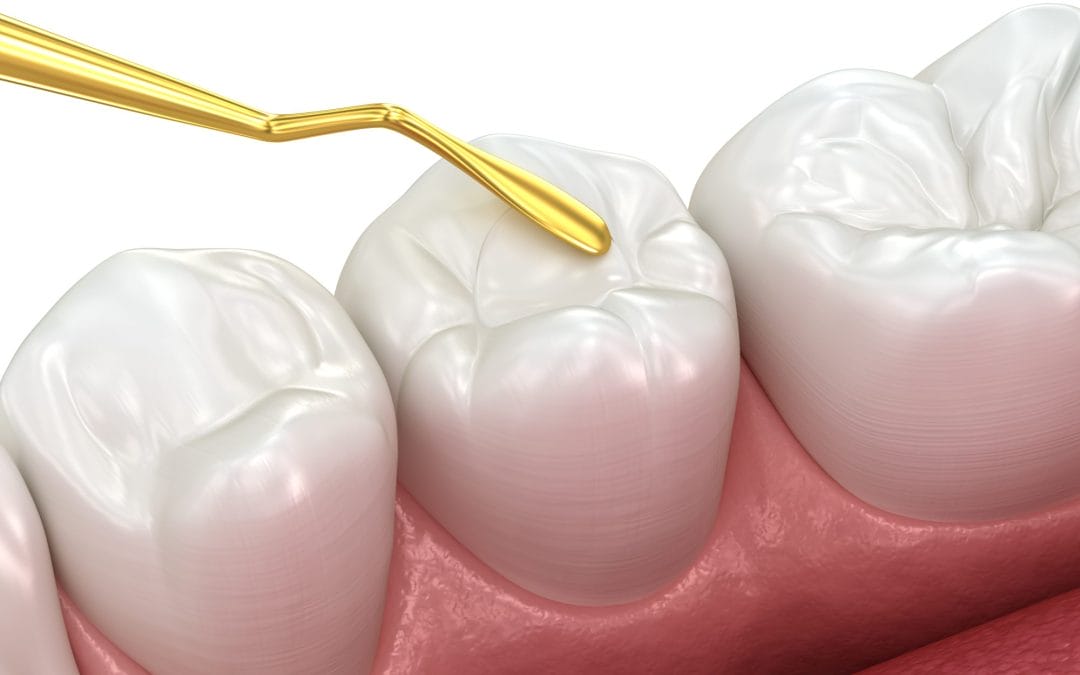As a parent, you want your child to have strong teeth for life. Dental sealants can help your child’s oral health starting from a young age. These thin layers are put on the chewing surfaces of the teeth. They are there to help keep out cavities and stop tooth decay. Dental sealants are a smart way to support your child’s dental care, along with brushing and flossing daily.
Understanding Dental Sealants
A dental sealant is a thin plastic layer put on top of teeth. This helps to keep out decay and is designed to work well on the molars, which have numerous small grooves and pits.
When a dental sealant goes on, it’s like a shield. The surface of the tooth gets smooth. This keeps out food particles and stops bacteria from getting stuck. It can be challenging for kids to brush every tooth thoroughly, so this is a great way to care for their teeth. This extra layer makes a big difference. Now, let’s find out more about how dental sealants work.
What Are Dental Sealants and How Do They Work?
Dental sealants are thin liquid coatings that go onto the grooves of your child’s teeth. These are put on the chewing surfaces of the molars and premolars because food particles often get stuck there. These parts of the teeth can be hard to clean with a toothbrush. This is where the sealant helps out.
When the liquid sealant is applied, it dries quickly and adheres to the tooth. This creates a physical barrier on the tooth that prevents food particles and plaque, the primary causes of tooth decay, from entering. You can think of it as a clear shield that covers your child’s smile.
Another good thing is that these dental sealants not only keep away decay. They can also stop small cavities from getting worse. The sealant is clear, allowing your dentist to still see the tooth and monitor for any potential problems. Dental sealants are easy to use, last for a long time, and help your child’s teeth stay healthy and free from cavities until they become a teenager.
Preventing Cavities and Tooth Decay
Tooth decay often begins in the small grooves on the chewing surfaces of children’s teeth. Food particles and plaque build up in these spots because they are hard to clean. Dental sealants help to solve this problem.
- Sealants cover and close off the pits and grooves found in molars and premolars.
- They stop bacteria and plaque from gathering, which helps keep away cavities.
- With sealants, the need for dental fillings or other procedures is lowered.
When you put sealants on children’s teeth, you help protect them from decay, especially during the years when they get the most cavities. It is a simple and low-cost dental step that gives a lot of value. If you want to fight cavities, sealants are a good idea to use.
Long-Term Oral Health Benefits for Children
The benefits of dental sealants extend beyond simply preventing one or two cavities. They help make the enamel on a child’s teeth stronger. This tough outside layer gives a child’s teeth more protection from daily use over the years.
When sealants are placed on permanent teeth, such as first and second molars, they help keep decay away. Because of this, there is less need for big treatments like fillings, crowns, or even removing teeth in the future.
Adding sealants to a child’s regular dental care helps with overall oral health. This step gets kids into good habits early. It also allows them to show off a healthy, bright smile as they age.
The Dental Sealant Application Process
Applying dental sealants is easy and quick, making it a non-stressful experience for both kids and their parents. The dentist or hygienist will begin by thoroughly cleaning and drying your child’s teeth. After this, they put an acidic gel on the surface. This gel makes the tooth a little rough so the sealant can stick better.
Next, the dentist will wash off the gel before painting the liquid sealant onto the tooth. They use a blue light to make the sealant hard. The whole process does not hurt and helps protect your child’s teeth for a long time.
What to Expect During the Procedure
The dental sealant process is simple and is planned to keep your child comfortable. Here is what usually happens:
- The hygienist will clean the tooth really well, taking off any debris.
- Then, an acidic gel is put on to make the chewing surface a bit rough so the sealant sticks better.
- The dental sealant is placed on the tooth, then hardened using a curing blue light.
This painless process only takes a few minutes for each tooth. Your child can return to their normal activities right away, feeling good and safe with improved dental protection.
Aftercare Tips and Longevity of Sealants
Maintaining a good oral care routine is essential to help dental sealants last. Remind your child to brush their teeth twice a day using fluoride toothpaste. They should also floss to keep all their teeth, even those with sealants, free from bits of food and other debris.
It is also beneficial to visit the dentist for regular check-ups. The dentist will examine the sealants and determine if it is time to reapply them. With proper care, sealants can last for up to ten years.
Simple and steady habits like this help put your child’s oral health first.
Schedule an Appointment Today
Dental sealants play a crucial role in maintaining your child’s oral health. They work by sealing the grooves and pits on the teeth. In this way, they lower the chance of cavities and decay. Sealants do more than provide quick help; they also add to your child’s long-term oral health. They can help their smile stay bright and healthy as they grow. Contact Dentistry of West Bend today to learn more about dental sealants for your kids.


Recent Comments